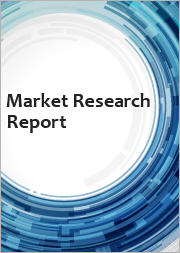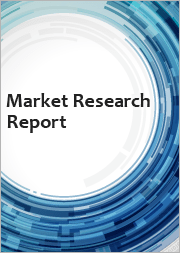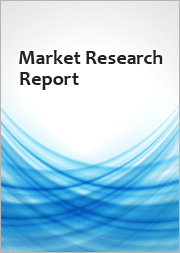
|
시장보고서
상품코드
1827407
펌프 시장 : 펌프 유형, 기술, 동력원, 최종사용자, 유통 채널별 - 세계 예측(2025-2032년)Pumps Market by Pump Type, Technology, Power Source, End User, Distribution Channel - Global Forecast 2025-2032 |
||||||
펌프 시장은 2032년까지 CAGR 5.41%로 1,203억 5,000만 달러로 성장할 것으로 예측됩니다.
| 주요 시장 통계 | |
|---|---|
| 기준 연도 2024년 | 789억 달러 |
| 추정 연도 2025년 | 829억 달러 |
| 예측 연도 2032 | 1,203억 5,000만 달러 |
| CAGR(%) | 5.41% |
에너지 전환, 디지털화, 공급망 강건화가 펌프 산업 환경을 어떻게 재정의하고 있는지에 대한 간결한 전략적 소개를 프레임워크화하여 소개합니다.
세계 펌프 산업은 산업 현대화, 지속가능성 의무화, 진화하는 인프라 수요의 교차점에 위치하고 있습니다. 최근 몇 년 동안 이 산업은 에너지 전환의 우선순위, 디지털 통합 및 최종사용자의 기대치 변화로 인해 눈에 띄는 변화를 겪었습니다. 이러한 힘은 제품 디자인, 라이프사이클 경제, 애프터마켓 참여 모델을 재구성하고 제조업체와 공급업체가 기존의 비즈니스 관행과 투자 우선순위를 재검토하도록 강요하고 있습니다.
이해관계자들이 전략적 선택을 평가할 때, 부품 수준의 혁신뿐만 아니라 조달 및 운영 의사결정에 영향을 미치는 광범위한 시스템 역학도 고려해야 합니다. 주요 부품과 물류 네트워크에 영향을 미친 파괴적인 사태로 인해 공급망 복원력이 결정적인 관심사가 되었고, 현지화, 공급업체 다변화, 재고 전략에 다시 한 번 중점을 두게 되었습니다. 또한, 규제 동향과 공공 조달 프레임워크에 따라 제품 포트폴리오 전반에 걸쳐 에너지 효율, 배출 감소 및 순환성에 대한 관심이 점점 더 높아지고 있습니다.
본 Executive Summary는 펌프 생태계 리더들에게 가장 중요한 트렌드, 경쟁사 동향, 실행 가능한 권고사항을 정리한 보고서입니다. 이 주요 요약은 의사결정권자가 가치가 창출되는 곳, 경쟁 장벽이 어떻게 진화하는지, 어떤 전략적 움직임이 장기적인 성장과 경영 회복력을 이끌어 낼 수 있는지를 명확하게 이해할 수 있도록 하는 것을 목표로 합니다.
기술 수렴, 탈탄소화 압력, 공급망 재편이 솔루션 지향적 펌프 시스템의 새로운 시대를 어떻게 가속화할 것인가?
펌프 산업은 기술적 수렴과 거시경제적 압력으로 인해 혁신적인 변화를 경험하고 있습니다. 첫째, 디지털화는 상태 모니터링에 그치지 않고 예지보전과 클라우드 네이티브 서비스 플랫폼으로 크게 전환되고 있습니다. 그 결과, 벤더들은 순수 하드웨어 공급업체에서 소프트웨어, 분석, 성과 기반 서비스 계약을 번들로 제공하는 통합 솔루션 제공업체로 전환하고 있습니다. 이러한 변화는 수익 구조를 변화시킬 뿐만 아니라, 조달 결정에 있어 데이터 플랫폼, 사이버 보안, 사용자 경험의 중요성을 높이고 있습니다.
동시에 탈탄소화에 대한 약속은 제품 및 공정 양면에서 기술 혁신을 요구하고 있습니다. 각 제조업체들은 고효율 유압 기기, 가변 주파수 구동장치 및 기존 디젤이 주류를 이루던 부문의 전동화에 투자하고 있습니다. 이러한 발전은 총소유비용의 계산을 바꾸고 유틸리티, 산업 가공, 빌딩 서비스 분야에서 구매자의 선호도에 영향을 미치고 있습니다. 동시에 규제 요구와 인센티브 제도로 인해 대상 시장의 레거시 시스템 교체 주기가 가속화되고 있습니다.
기업이 회복력과 니어쇼어링 전략을 추구함에 따라 공급망 역학은 계속 진화하고 있습니다. 이 재편은 지역 제조, 전략적 재고 허브, 리드 타임 단축을 위한 부품 표준화에 대한 투자에 박차를 가하고 있습니다. 또한, 신소재와 적층 가공 기술을 통해 신속한 프로토타이핑과 소량 로트 커스터마이징이 가능해져 제품 라이프사이클이 더욱 빨라지고 있습니다. 이러한 변화를 종합하면, 기술, 지속가능성, 공급망 민첩성을 일관된 상업용 제품에 통합할 수 있는 기업들은 새로운 경쟁 우위를 확보할 수 있습니다.
2025년 미국의 관세 부과가 조달, 가격 책정, 공급망 전략에 미치는 누적된 구조적, 상업적 영향을 분석합니다.
미국이 2025년에 시행한 관세 변경은 펌프 생태계에 중층적이고 누적적인 영향을 미쳤으며, 조달 전략, 가격 역학, 공급업체 관계에 영향을 미쳤습니다. 처음에는 특정 펌프 부품 및 완제품 유닛에 대한 수입 관세 인상으로 인해 해외 생산 기지에 의존하는 조직의 상륙 비용이 증가했습니다. 이에 대응하기 위해 조달팀은 신속한 비용 대 서비스 분석을 실시하여 마진과 납기 실적을 유지하기 위한 대체 조달 옵션을 검토했습니다. 그 결과, 기존 세계 공급업체들은 가격 책정 모델을 재검토하고, 신규 진입 기업들은 현지 생산 대체품에 대한 수요를 활용하고자 했습니다.
관세는 일시적인 혼란이 아니라 전략적 전환을 촉구했습니다. 제조업체들은 관세의 영향을 줄이고 주요 고객사의 리드타임을 확보하기 위해 현지 조립 및 부품 제조에 대한 현지화 투자를 가속화했습니다. 이와 함께 관세의 영향을 받는 부품을 국내 조달품으로 대체하기 위해 제품 재설계를 진행하는 기업도 있어 설계, 공급망, 품질팀 간의 긴밀한 협력이 필요하게 되었습니다. 이러한 움직임은 애프터마켓 전략의 조정으로 보완되었으며, 각 회사는 예비 부품의 가용성과 장기 서비스 계약을 강조하여 구매자의 초기 가격 민감도를 상쇄했습니다.
관세는 직접적인 비용에 대한 영향뿐만 아니라 더 넓은 범위의 경쟁력에도 영향을 미쳤습니다. 지역적으로 확고한 발자취를 가진 기업은 수입 관세의 영향을 덜 받고 물류가 더 탄력적이기 때문에 단기적으로 우위를 점할 수 있습니다. 반대로 관세의 영향을 받는 지역에 고도로 집중된 기업들은 다각화된 제조 거점으로 자본을 재분배해야 한다는 압력에 직면했습니다. 2025년 관세의 누적 효과는 업계 내 구조적 재편을 가속화하고, 공급망 현지화, 제품 모듈화, 공급업체와 구매자 간 위험 분산을 위한 계약 방식에 대한 지속적인 집중을 촉진했습니다.
심층 세분화 분석을 통해 펌프 유형, 실현 기술, 동력원, 최종사용자 요구, 채널이 어떻게 교차하여 전략적 기회를 형성하는지 파악할 수 있습니다.
세분화 분석을 통해 기술적 차별화와 구매자 행동이 수렴하여 기회 포켓이 형성되는 곳을 파악할 수 있습니다. 펌프의 종류에 따라 시장은 동적 펌프와 용적식 펌프로 구분됩니다. 다이나믹 펌프는 소화전 시스템, 수평 및 수직 원심 구성, 수중 설계를 포함한 원심 아키텍처를 포함하며 각기 다른 수력 및 설치 요구 사항에 최적화되어 있습니다. 왕복동 펌프에는 왕복동형과 회전형이 있으며, 왕복동형은 다이어프램, 피스톤, 플런저 등 정밀한 유량 제어 및 고압 용도에 적합합니다. 회전형은 기어 펌프, 로브 펌프, 연동 펌프, 스크류 펌프 등 점성 및 전단에 민감한 매체를 취급하는 데 적합합니다.
기술적으로는 마그네틱 구동 펌프와 가변 주파수 구동 솔루션이 각각 누출 위험 감소와 에너지 관리 개선을 통해 가치를 높이고 있습니다. 마그네틱 드라이브 설계는 누출이 발생하기 쉬운 애플리케이션의 동적 밀봉을 제거하여 환경 성능을 향상시키고 유지보수의 복잡성을 줄입니다. 한편, 가변 주파수 드라이브는 세밀한 속도 제어를 가능하게함으로써 변동하는 부하 조건에서 에너지 소비를 줄이고 장비의 수명을 연장합니다.
전원 공급장치의 세분화에서는 기존의 전기 드라이브 외의 다양화가 계속되고 있습니다. 디젤은 여전히 원격지 및 비상 사용 사례에 적합하며, 전기 솔루션은 산업화 된 환경에서 전기 솔루션이 주류를 차지하고, 고압 및 소형 폼팩터가 필요한 경우 유압이 적용되며, 태양열 구동 펌프는 운영 비용과 배출량을 줄이기 위해 오프그리드 물 및 관개 프로젝트에서 떠오르고 있습니다. 상업용, 산업용, 주거용 애플리케이션에 걸친 최종사용자 세분화는 명확한 조달 주기와 성능 우선순위를 강조합니다. 상업용 구매자는 수명주기 비용과 서비스 범위를 우선시하고, 산업용 고객은 신뢰성과 공정 제어 시스템과의 통합을 중시하며, 주거용 구매자는 단순성, 효율성 및 선투자가 용이한 가격에 중점을 둡니다. 마지막으로, 판매 채널은 오프라인 채널은 현장 사양과 애프터서비스 지원을 우선시하는 오프라인 채널과 편의성, 설정 가능성, 디지털 컨텐츠 및 문서에 대한 액세스를 제공하는 온라인 채널로 나뉩니다. 이러한 세분화를 종합하면 차별화된 가치를 얻기 위해 제품 혁신, 서비스 디자인, 채널 전략의 우선순위를 어디에 두어야 하는지가 명확해집니다.
아메리카, 유럽, 중동 및 아프리카, 아시아태평양의 수요 촉진요인, 규제 뉘앙스, 전략적 필수 사항 지역별 분석
지역별 주요 인사이트
지역 역학은 수요 패턴, 규제 압력, 경쟁 포지셔닝을 형성하고 전략적 계획 수립에 필수적입니다. 아메리카에서는 인프라 업데이트 프로그램, 지방정부의 물 관리 우선순위, 신속한 서비스와 부품 공급을 중시하는 애프터마켓 문화의 강점 등이 성장의 원동력이 되고 있습니다. 지역적 공급망 우위와 대규모 설치 기반은 서비스 중심의 성장과 에너지 효율과 배출량 감소를 우선시하는 리노베이션 이니셔티브의 기회를 창출합니다.
유럽, 중동 및 아프리카는 다양한 수요 동인의 모자이크를 보여주고 있습니다. 서유럽은 엄격한 환경 규제와 고효율 장비에 대한 인센티브가 특징이며, 이로 인해 전동화 및 디지털화 된 펌프 시스템의 채택이 가속화되고 있습니다. 중동은 대용량, 고신뢰성 솔루션이 필수적인 대규모 인프라 및 석유 및 가스 관련 펌프 용도에 중점을 두고 있습니다. 아프리카는 저렴한 가격과 견고성을 최우선으로 고려하는 분산형 급수 시스템 및 태양열 펌프 솔루션의 성장 프론티어입니다.
아시아태평양은 급속한 산업 확장, 도시화, 물, 에너지, 인프라에 대한 정부 투자 등의 요소를 모두 갖추고 있습니다. 이 지역 국가들은 조달의 정교함에 있어 큰 차이가 있습니다. 어떤 시장은 선진 기술이나 현지 제조 능력을 조기에 도입하는 반면, 어떤 시장은 비용 효율적이고 검증된 설계에 중점을 둡니다. 어느 지역이든 규제, 자금 조달 구조, 현지 제조 정책의 상호 작용은 기업이 대응력과 상업적 성공을 극대화하기 위해 역량, 파트너 네트워크, 애프터마켓 서비스 발자취에 투자해야 하는 위치에 영향을 미칩니다.
모듈형 플랫폼, 애프터마켓 서비스, 타겟팅된 파트너십을 통해 시장 리더를 차별화하기 위한 기업 전략과 역량 투자
선진 기업들은 첨단 유압 기기, 디지털 서비스, 애프터마켓 프로그램을 결합한 통합 솔루션 제공을 통해 차별화를 꾀하고 있습니다. 성공적인 기업들은 모듈형 제품 플랫폼에 투자하여 맞춤화 비용을 절감하는 동시에 맞춤형 솔루션의 시장 출시 시간을 단축하고 있습니다. 또한, 서비스 계약, 디지털 유지보수 구독, 예비 부품 생태계를 통해 평생 고객 가치를 높이고, 경쟁사와의 조달 주기에 대한 끈기를 만들어 지속적인 수익원을 구축하고 있습니다.
기술 제휴와 타겟형 인수는 역량 격차를 빠르게 해소하기 위한 일반적인 전략입니다. 틈새 소프트웨어 제공업체나 전문 부품 제조업체를 인수함으로써 기존 공급업체는 모니터링 플랫폼이나 에너지 효율이 높은 제품 라인의 시장 출시 시간을 단축할 수 있습니다. 동시에 리드 타임을 단축하고 설치 지원을 개선하기 위해 고객 직접 판매 능력을 강화하고 유통망을 확대하는 기업도 있습니다. 제조 자동화, 품질 보증, 지역 조립에 대한 전략적 투자로 생산능력의 유연한 배분과 관세 중심의 조달 변화에 더 잘 대응할 수 있게 되었습니다.
인재와 조직 설계도 차별화 요소입니다. 엔지니어링 팀, 현장 서비스 팀, 커머셜 팀이 고객 성과에 중점을 두고 협력하는 기업은 솔루션 기반 판매 모델을 보다 효과적으로 전개하고 있습니다. 또한, 소재 선택, 에너지 효율적 설계, 사용 후 제품 전략 등 가치사슬 전반에 걸쳐 지속가능성을 우선시하는 기업들은 가격, 신뢰성과 함께 환경적 성능을 중시하는 조달 부문의 지지를 받고 있습니다.
서비스, 현지화, 디지털 전환을 통해 시장 파괴를 경쟁 우위로 전환하기 위한 경영진별 실천적 우선순위 행동
업계 리더들은 혼란에 대응하고 새로운 기회를 포착하기 위해 일련의 협력적 행동을 우선시해야 합니다. 첫째, 공급자의 인센티브와 구매자의 성과를 일치시키는 예지보전, 성능보증, 개조 경로를 패키지화하여 제품 중심에서 서비스 중심의 비즈니스 모델로의 전환을 가속화합니다. 이러한 전환은 고객에게는 총소유비용(TCO)에 대한 걱정을 덜어주고, 공급업체에게는 반복적인 수익원을 창출할 수 있습니다.
둘째, 관세 및 물류 노출을 줄이기 위해 지역 제조 및 공급업체 다변화 전략을 추구합니다. 지역에 특화된 조립 허브를 설립하고, 주요 부품의 2차 공급업체를 파악하여 리드타임을 단축하고 협상력을 향상시킵니다. 셋째, 실용적인 분석을 제공하고 고객의 운영 기술 스택과 통합되는 디지털 플랫폼에 전략적으로 투자하고, 이러한 플랫폼이 상호 운용 가능하며, 견고한 사이버 보안 및 데이터 거버넌스 프레임워크에 의해 뒷받침되는지 확인합니다. 뒷받침되는지 확인합니다.
넷째, 에너지 효율이 높은 유압 장비, 위험 매체에 대한 씰리스 설계, 재활용 가능한 구성요소 구조를 우선시하여 제품 개발 및 공급망 의사결정에 지속가능성을 통합합니다. 다섯째, 구매자의 편의성을 높이는 온라인 구성기, 디지털 문서화, E-Commerce 채널과 오프라인 기술 지원의 균형을 맞추기 위해 시장 출시 모델을 재구성합니다. 마지막으로, 지역 허브의 예비 부품 재고 확대, 신속한 현장 대응 팀 제공, 유연한 자금 조달 및 성과 기반 계약 제공을 통해 애프터마켓 역량을 강화하고 고객의 조달 장벽을 낮추기 위해 노력하고 있습니다. 이러한 행동들을 결합하여 회복탄력성을 구축하고 차별화된 고객 가치를 창출할 수 있습니다.
1차 인터뷰, 기술 검토, 공급망 매핑, 시나리오 분석을 결합한 엄격한 혼합법 조사 방법론에 대한 설명
본 분석은 1차 조사와 2차 조사를 결합한 구조화된 조사 방법을 통해 개발되었습니다. 1차 조사에는 업계 임원, 현장 서비스 리더, 조달 전문가, 시스템 통합업체와의 구조화된 인터뷰를 통해 업무 제약, 기술 도입, 조달 선호도에 대한 생생한 관점을 파악했습니다. 이러한 질적 입력은 가설을 개발하고 추가 조사를 위한 주제의 우선순위를 정하는 데 도움이 되었습니다.
2차 조사에서는 기술 문헌, 표준, 규제 프레임워크, 특허 출원 등을 체계적으로 검토하여 기술 궤적과 컴플라이언스 촉진요인을 매핑했습니다. 공급망 매핑과 부품 수준 분석을 통해 중요한 공급처와 잠재적 취약점 노드에 대한 인사이트를 얻었습니다. 업계 컨퍼런스, 제품 카탈로그, 기술 백서의 데이터는 증거 기반을 보완하고, 제품 아키텍처와 서비스 모델의 비교 평가를 지원했습니다.
분석 방법으로는 관세 및 규제 변화의 영향을 평가하기 위한 시나리오 분석, 마진 풀 및 애프터마켓 기회를 파악하기 위한 가치사슬 분해, 다양한 제조 및 조달 발자국의 탄력성을 평가하기 위한 민감도 테스트 등이 포함됐습니다. 이 과정에서 발견된 사항들은 해당 분야 전문가들의 동료 검토를 통해 검증을 거쳤으며, 관찰된 시장 행동과 대조하여 실질적인 타당성과 신뢰성을 확보했습니다.
기술, 서비스, 공급망에 대한 적응이 신흥 펌프 시장에서 경쟁의 승자를 결정하는 방법에 대한 전략적 결론을 종합적으로 제시합니다.
펌프 산업은 디지털화, 탈탄소화, 전략적 공급망 재편으로 인해 상당한 진화를 겪고 있습니다. 이러한 추세는 가치사슬을 재정의하고, 통합 솔루션을 제공하고, 성과를 보장하며, 탄력적이고 지역별로 최적화된 공급망을 유지할 수 있는 기업으로 경쟁의 중심이 이동하고 있습니다. 2025년 관세 개정은 구조조정을 가속화하여 단기적인 비용 관리 대응과 현지화 및 제품 모듈화에 대한 장기적인 투자를 촉진했습니다.
향후 상호 운용 가능한 디지털 플랫폼, 우선순위가 높은 에너지 효율 혁신, 서비스 지향적 상업 모델에 투자하는 시장 진입자들은 지속적인 우위를 확보할 수 있을 것으로 보입니다. 마찬가지로 중요한 것은 전략적 의도를 탁월한 운영에 반영하기 위해 조직 역량, 특히 R&D, 공급망, 현장 서비스 간의 기능 간 협업을 조정할 수 있는 능력입니다. 궁극적으로 기술 리더십과 고객 중심의 서비스 모델, 그리고 지역 제조에 대한 현실적인 접근과 균형을 이루는 기업이 지속가능한 성장을 이루고 시장에서 방어적인 위치를 구축할 수 있을 것으로 보입니다.
자주 묻는 질문
목차
제1장 서문
제2장 조사 방법
제3장 주요 요약
제4장 시장 개요
제5장 시장 인사이트
제6장 미국 관세의 누적 영향 2025
제7장 AI의 누적 영향 2025
제8장 펌프 시장 : 펌프 유형별
- 다이나믹 펌프
- 원심 펌프
- 소화전 시스템
- 수평 원심식 펌프
- 잠수정 펌프
- 수직 원심식 펌프
- 용적식 펌프
- 상호 펌프
- 다이어프램 펌프
- 피스톤 펌프
- 플런저 펌프
- 로터리 펌프
- 기어 펌프
- 로브 펌프
- 연동 펌프
- 나사 펌프
- 상호 펌프
제9장 펌프 시장 : 기술별
- 자기 드라이브 펌프
- 가변 주파수 드라이브 펌프
제10장 펌프 시장 : 전원별
- 디젤
- 전기
- 유압식
- 태양
제11장 펌프 시장 : 최종사용자별
- 상업용
- 산업
- 주거용
제12장 펌프 시장 : 유통 채널별
- 오프라인
- 온라인
제13장 펌프 시장 : 지역별
- 아메리카
- 북미
- 라틴아메리카
- 유럽, 중동 및 아프리카
- 유럽
- 중동
- 아프리카
- 아시아태평양
제14장 펌프 시장 : 그룹별
- ASEAN
- GCC
- EU
- BRICS
- G7
- NATO
제15장 펌프 시장 : 국가별
- 미국
- 캐나다
- 멕시코
- 브라질
- 영국
- 독일
- 프랑스
- 러시아
- 이탈리아
- 스페인
- 중국
- 인도
- 일본
- 호주
- 한국
제16장 경쟁 구도
- 시장 점유율 분석, 2024
- FPNV 포지셔닝 매트릭스, 2024
- 경쟁 분석
- Alfa Laval Corporate AB
- Altra Industrial Motion Corporation
- Atlas Copco AB
- Baker Hughes
- Cornell Pump Company
- Dover Corporation
- Ebara Corporation
- Flowserve Corporation
- Fristam Pumps USA
- Gardner Denver
- Gorman Rupp Company
- Graco Inc.
- Grundfos Holding A/S
- HERMETIC-Pumpen GmbH
- Idex Corporation
- Ingersoll Rand Inc.
- ITT Inc.
- Kirloskar Brothers Ltd.
- Ruhrpumpen Group by Corporacion EG
- Schlumberger Limited
- SPX FLOW, Inc.
- Sulzer Ltd.
- The Weir Group PLC
- Thompson Pump and Manufacturing Company
- WILO SE
- Xylem Inc.
The Pumps Market is projected to grow by USD 120.35 billion at a CAGR of 5.41% by 2032.
| KEY MARKET STATISTICS | |
|---|---|
| Base Year [2024] | USD 78.90 billion |
| Estimated Year [2025] | USD 82.90 billion |
| Forecast Year [2032] | USD 120.35 billion |
| CAGR (%) | 5.41% |
Concise strategic introduction framing how energy transition, digitalization, and supply chain resilience are redefining the pumps industry landscape
The global pumps sector sits at the intersection of industrial modernization, sustainability mandates, and evolving infrastructure demands. In recent years the industry has undergone a pronounced shift driven by energy transition priorities, digital integration, and changing end-user expectations. These forces are reshaping product design, lifecycle economics, and aftermarket engagement models, forcing manufacturers and suppliers to rethink traditional business practices and investment priorities.
As stakeholders evaluate strategic options, they must consider not only component-level innovation but also the broader system dynamics that influence procurement and operational decision-making. Supply chain resilience has become a defining concern following disruptions affecting key components and logistics networks, prompting a renewed emphasis on localization, supplier diversification, and inventory strategies. Moreover, regulatory trends and public procurement frameworks are driving an increased focus on energy efficiency, emissions reduction, and circularity across product portfolios.
This executive summary synthesizes the most consequential trends, competitive dynamics, and actionable recommendations for leaders in the pumps ecosystem. It seeks to equip decision-makers with a clear understanding of where value is being created, how competitive barriers are evolving, and which strategic moves will unlock long-term growth and operational resilience.
How technological convergence, decarbonization pressures, and supply chain realignment are jointly accelerating a new era of solution-oriented pump systems
The pumps industry is experiencing transformative shifts driven by technological convergence and macroeconomic pressures. First, digitalization is moving well beyond condition monitoring toward predictive maintenance and cloud-native service platforms. As a result, vendors are transitioning from pure hardware suppliers to integrated solution providers that bundle software, analytics, and outcome-based service contracts. This shift not only alters revenue mix but also elevates the importance of data platforms, cybersecurity, and user experience in procurement decisions.
Concurrently, decarbonization commitments are forcing both product and process innovation. Manufacturers are investing in high-efficiency hydraulics, variable frequency drives, and electrification of previously diesel-dominated segments. These advances are changing total cost of ownership calculations and influencing buyer preferences in utilities, industrial processing, and building services. At the same time, regulatory demands and incentive schemes are accelerating replacement cycles for legacy systems in target markets.
Supply chain dynamics continue to evolve as companies pursue resilience and nearshoring strategies. This realignment is spurring investment in regional manufacturing, strategic inventory hubs, and component standardization to reduce lead times. Moreover, emerging materials and additive manufacturing techniques are enabling rapid prototyping and small-batch customization, supporting more responsive product lifecycles. Taken together, these shifts are creating new competitive advantages for companies that can integrate technology, sustainability, and supply chain agility into coherent commercial offerings.
Analyzing the cumulative structural and commercial consequences of the United States tariffs enacted in 2025 on sourcing, pricing, and supply chain strategies
The tariff changes implemented by the United States in 2025 have had a layered and cumulative impact on the pumps ecosystem, influencing sourcing strategies, pricing dynamics, and supplier relationships. Initially, higher import duties on specific pump components and finished units increased landed costs for organizations reliant on overseas manufacturing hubs. In response, procurement teams undertook rapid cost-to-serve analyses and explored alternative sourcing options to preserve margin and delivery performance. Consequently, established global suppliers revisited their pricing models while new entrants sought to capitalize on demand for locally produced alternatives.
Over time the tariffs have catalyzed strategic shifts rather than temporary disruptions. Manufacturers accelerated localization investments in regional assembly and component manufacturing to mitigate duty exposure and secure lead-times for key customers. In parallel, some firms pursued product redesigns to substitute tariff-affected components with domestically sourced equivalents, which required tighter collaboration between design, supply chain, and quality teams. These moves were complemented by adjustments in aftermarket strategies, where companies emphasized spare parts availability and long-term service agreements to offset the initial price sensitivity among buyers.
Looking beyond immediate cost implications, the tariffs have also influenced broader competitive dynamics. Players with established regional footprints gained near-term advantages due to lower exposure to import duties and more resilient logistics. Conversely, firms highly concentrated in tariff-affected geographies faced pressure to redeploy capital toward diversified manufacturing footprints. In summary, the cumulative effect of the 2025 tariffs has been to accelerate structural realignment within the industry, prompting a sustained focus on supply chain localization, product modularity, and contractual approaches that shift risk between suppliers and buyers.
Deep segmentation analysis revealing how pump types, enabling technologies, power sources, end-user needs, and channels intersect to shape strategic opportunities
Segmentation analysis reveals where technical differentiation and buyer behavior converge to create pockets of opportunity. When reviewed by pump type, the market differentiates between dynamic pumps and positive displacement pumps. Dynamic pumps encompass centrifugal architectures including fire hydrant systems, horizontal and vertical centrifugal configurations, and submersible designs, each optimized for distinct hydraulic and installation requirements. Positive displacement pumps include reciprocating and rotary families; reciprocating designs span diaphragm, piston, and plunger variants typically selected for precise flow control or high-pressure applications, while rotary machines cover gear, lobe, peristaltic, and screw pumps that excel in handling viscous or shear-sensitive media.
From a technology perspective, magnetic drive pumps and variable frequency drive solutions are driving value through reduced leakage risk and improved energy management respectively. Magnetic drive designs eliminate dynamic seals for leak-prone applications, thereby improving environmental performance and lowering maintenance complexity, whereas variable frequency drives enable fine-grained speed control that reduces energy consumption and extends equipment life under variable load conditions.
Power source segmentation shows continued diversification beyond traditional electric drives. Diesel remains relevant for remote or emergency-use cases, electric solutions dominate across industrialized settings, hydraulic power is applied where high pressure and compact form factors are required, and solar-driven pumping is emerging in off-grid water and irrigation projects to reduce operating costs and emissions. End-user segmentation across commercial, industrial, and residential applications underscores distinct procurement cycles and performance priorities: commercial buyers prioritize lifecycle cost and service coverage, industrial customers emphasize reliability and integration with process control systems, and residential purchasers focus on simplicity, efficiency, and upfront affordability. Finally distribution channels split between offline channels that prioritize hands-on specification and aftersales support and online channels that offer convenience, configurability, and access to digital content and documentation. Synthesizing these segmentation lenses highlights where product innovation, service design, and channel strategies should be prioritized to capture differentiated value.
Regional breakdown of demand drivers, regulatory nuances, and strategic imperatives across the Americas, Europe Middle East & Africa, and Asia-Pacific
Key Regional Insights
Regional dynamics shape demand patterns, regulatory pressures, and competitive positioning in ways that are critical for strategic planning. In the Americas, growth drivers include infrastructure renewal programs, municipal water management priorities, and a strong aftermarket culture that values rapid service and parts availability. Regional supply chain advantages and a sizable installed base create opportunities for service-led growth and retrofitting initiatives that prioritize energy efficiency and emissions reductions.
Europe, Middle East & Africa presents a diverse mosaic of demand drivers. Western Europe is characterized by stringent environmental regulations and incentives for high-efficiency equipment, which accelerates adoption of electrified and digitally enabled pump systems. The Middle East emphasizes large-scale infrastructure and oil-and-gas related pumping applications where high-capacity, high-reliability solutions are essential. Africa is a growth frontier for decentralized water systems and solar-powered pumping solutions, where affordability and robustness are primary considerations.
Asia-Pacific combines rapid industrial expansion, urbanization, and targeted government investments in water and energy infrastructure. Countries in this region vary significantly in procurement sophistication; some markets demonstrate early adoption of advanced technologies and local manufacturing capacity, while others remain focused on cost-effective, proven designs. Across all regions the interplay of regulation, financing mechanisms, and local manufacturing policies influences where firms should invest in capacity, partner networks, and aftermarket service footprints to maximize responsiveness and commercial success.
Corporate strategies and capability investments that distinguish market leaders through modular platforms, aftermarket services, and targeted partnerships
Leading firms are differentiating through integrated solution offerings that combine advanced hydraulics, digital services, and aftermarket programs. Successful companies are investing in modular product platforms that reduce customization costs while enabling faster time-to-market for tailored solutions. They are also building recurring revenue streams through service contracts, digital maintenance subscriptions, and spare parts ecosystems that increase lifetime customer value and create stickiness in competitive procurement cycles.
Technology partnerships and targeted acquisitions are common strategies to close capability gaps quickly. By acquiring niche software providers or specialty component manufacturers, established suppliers can accelerate time to market for monitoring platforms and energy-efficient product lines. At the same time, some companies are strengthening direct-to-customer capabilities and expanding distribution networks to shorten lead times and improve installation support. Strategic investments in manufacturing automation, quality assurance, and regional assembly are enabling more flexible capacity allocation and better responsiveness to tariff-driven sourcing changes.
Talent and organizational design are also differentiators. Firms that align engineering, field services, and commercial teams around customer outcomes are more effective at deploying solution-based sales models. Additionally, companies that prioritize sustainability across the value chain-through materials choices, energy-efficient designs, and end-of-life strategies-are gaining traction with procurement functions that weigh environmental performance alongside price and reliability.
Practical priority actions for executives to convert market disruptions into competitive advantage through services, localization, and digital transformation
Industry leaders should prioritize a set of coordinated actions to navigate disruption and capture emerging opportunities. First, accelerate the migration from product-centric to service-centric business models by packaging predictive maintenance, performance guarantees, and retrofit pathways that align supplier incentives with buyer outcomes. This shift reduces total cost of ownership concerns for customers while creating recurring revenue streams for suppliers.
Second, pursue regional manufacturing and supplier diversification strategies to mitigate tariff and logistics exposure. Establishing localized assembly hubs and qualifying secondary suppliers for critical components will shorten lead times and improve negotiation leverage. Third, invest strategically in digital platforms that deliver actionable analytics and integrate with customers' operational technology stacks; ensure these platforms are interoperable and backed by robust cybersecurity and data governance frameworks.
Fourth, embed sustainability into product development and supply chain decisions by prioritizing energy-efficient hydraulics, seal-less designs for hazardous media, and recyclable component architectures. Fifth, realign go-to-market models to balance offline technical support with online configurators, digital documentation, and e-commerce channels that enhance buyer convenience. Finally, strengthen aftermarket capabilities by expanding spare parts inventories in regional hubs, providing rapid field-response teams, and offering flexible financing or outcome-based contracts to lower procurement hurdles for customers. Taken together these actions build resilience and create differentiated customer value.
Explanation of the rigorous mixed-method research approach combining primary interviews, technical review, supply chain mapping, and scenario analysis for robust findings
This analysis was developed through a structured research approach combining primary and secondary methods to ensure robustness and triangulation of findings. Primary research included structured interviews with industry executives, field service leaders, procurement specialists, and system integrators to capture first-hand perspectives on operational constraints, technology adoption, and procurement preferences. These qualitative inputs informed hypothesis development and the prioritization of themes for further investigation.
Secondary research entailed systematic review of technical literature, standards, regulatory frameworks, and patent filings to map technology trajectories and compliance drivers. Supply chain mapping and component-level analysis provided insight into critical sourcing points and potential vulnerability nodes. Data from industry conferences, product catalogs, and technical whitepapers supplemented the evidence base and supported comparative assessments of product architectures and service models.
Analytical techniques included scenario analysis to assess the implications of tariff and regulatory shifts, value chain decomposition to identify margin pools and aftermarket opportunities, and sensitivity testing to evaluate the resilience of different manufacturing and sourcing footprints. Throughout the process findings were validated through peer review with sector specialists and reconciled against observed market behavior to ensure practical relevance and credibility.
Strategic conclusion synthesizing how technology, services, and supply chain adaptation will determine competitive winners in the emerging pumps market
The pumps industry is undergoing a substantive evolution shaped by digitalization, decarbonization, and strategic supply chain realignment. These trends are redefining value propositions and shifting competition toward firms that can deliver integrated solutions, guarantee outcomes, and maintain resilient, regionally optimized supply chains. The 2025 tariff changes accelerated structural adjustments, prompting near-term cost management responses and longer-term investments in localization and product modularity.
Looking forward, market participants that invest in interoperable digital platforms, prioritized energy-efficiency innovations, and service-oriented commercial models will secure durable advantages. Equally important is the ability to adapt organizational capabilities-especially cross-functional collaboration between R&D, supply chain, and field services-to translate strategic intent into operational excellence. Ultimately, those who balance technical leadership with customer-centric service models and a pragmatic approach to regional manufacturing will be best positioned to capture sustainable growth and build defensible market positions.
Table of Contents
1. Preface
- 1.1. Objectives of the Study
- 1.2. Market Segmentation & Coverage
- 1.3. Years Considered for the Study
- 1.4. Currency & Pricing
- 1.5. Language
- 1.6. Stakeholders
2. Research Methodology
3. Executive Summary
4. Market Overview
5. Market Insights
- 5.1. Rising adoption of IoT-enabled smart pump systems for predictive maintenance in industrial operations
- 5.2. Expansion of energy-efficient variable frequency drive pumps to reduce operational costs in utilities
- 5.3. Growing demand for self-priming centrifugal pumps in wastewater and sewage treatment applications
- 5.4. Shift toward corrosion-resistant duplex stainless steel pumps for chemical processing safety
- 5.5. Development of solar-powered submersible pumps to enhance off-grid agricultural irrigation efficiency
- 5.6. Increasing focus on regulatory compliance and emissions reduction in municipal water pump installations
- 5.7. Emergence of modular skid-mounted pump units for rapid deployment in emergency response scenarios
- 5.8. Deployment of digital twin simulations to optimize pump design and operational performance
- 5.9. Innovation in microfluidic pump systems driving advancements in biomedical and lab automation
- 5.10. Growth of decentralized water treatment systems leveraging modular pump technologies
6. Cumulative Impact of United States Tariffs 2025
7. Cumulative Impact of Artificial Intelligence 2025
8. Pumps Market, by Pump Type
- 8.1. Dynamic Pumps
- 8.1.1. Centrifugal pumps
- 8.1.2. Fire hydrant system
- 8.1.3. Horizontal centrifugal pumps
- 8.1.4. Submersible pumps
- 8.1.5. Vertical centrifugal pumps
- 8.2. Positive Displacement Pumps
- 8.2.1. Reciprocating Pumps
- 8.2.1.1. Diaphragm Pumps
- 8.2.1.2. Piston Pumps
- 8.2.1.3. Plunger Pumps
- 8.2.2. Rotary Pumps
- 8.2.2.1. Gear Pumps
- 8.2.2.2. Lobe Pumps
- 8.2.2.3. Peristaltic Pumps
- 8.2.2.4. Screw Pumps
- 8.2.1. Reciprocating Pumps
9. Pumps Market, by Technology
- 9.1. Magnetic Drive Pumps
- 9.2. Variable Frequency Drive Pumps
10. Pumps Market, by Power Source
- 10.1. Diesel
- 10.2. Electric
- 10.3. Hydraulic
- 10.4. Solar
11. Pumps Market, by End User
- 11.1. Commercial
- 11.2. Industrial
- 11.3. Residential
12. Pumps Market, by Distribution Channel
- 12.1. Offline
- 12.2. Online
13. Pumps Market, by Region
- 13.1. Americas
- 13.1.1. North America
- 13.1.2. Latin America
- 13.2. Europe, Middle East & Africa
- 13.2.1. Europe
- 13.2.2. Middle East
- 13.2.3. Africa
- 13.3. Asia-Pacific
14. Pumps Market, by Group
- 14.1. ASEAN
- 14.2. GCC
- 14.3. European Union
- 14.4. BRICS
- 14.5. G7
- 14.6. NATO
15. Pumps Market, by Country
- 15.1. United States
- 15.2. Canada
- 15.3. Mexico
- 15.4. Brazil
- 15.5. United Kingdom
- 15.6. Germany
- 15.7. France
- 15.8. Russia
- 15.9. Italy
- 15.10. Spain
- 15.11. China
- 15.12. India
- 15.13. Japan
- 15.14. Australia
- 15.15. South Korea
16. Competitive Landscape
- 16.1. Market Share Analysis, 2024
- 16.2. FPNV Positioning Matrix, 2024
- 16.3. Competitive Analysis
- 16.3.1. Alfa Laval Corporate AB
- 16.3.2. Altra Industrial Motion Corporation
- 16.3.3. Atlas Copco AB
- 16.3.4. Baker Hughes
- 16.3.5. Cornell Pump Company
- 16.3.6. Dover Corporation
- 16.3.7. Ebara Corporation
- 16.3.8. Flowserve Corporation
- 16.3.9. Fristam Pumps USA
- 16.3.10. Gardner Denver
- 16.3.11. Gorman Rupp Company
- 16.3.12. Graco Inc.
- 16.3.13. Grundfos Holding A/S
- 16.3.14. HERMETIC-Pumpen GmbH
- 16.3.15. Idex Corporation
- 16.3.16. Ingersoll Rand Inc.
- 16.3.17. ITT Inc.
- 16.3.18. Kirloskar Brothers Ltd.
- 16.3.19. Ruhrpumpen Group by Corporacion EG
- 16.3.20. Schlumberger Limited
- 16.3.21. SPX FLOW, Inc.
- 16.3.22. Sulzer Ltd.
- 16.3.23. The Weir Group PLC
- 16.3.24. Thompson Pump and Manufacturing Company
- 16.3.25. WILO SE
- 16.3.26. Xylem Inc.



















